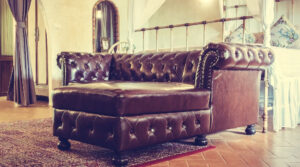Introduction Furniture
the unsung hero of our daily existence - is essential in our daily lives, providing functionality, comfort, and aesthetic appeal to our living spaces. Although we frequently concentrate on the design and style of furniture, it is also essential to consider the materials used in its production. The durability, upkeep requirements, and general quality of the furniture we select to equip our homes, businesses, or other locations are all heavily influenced by the materials used to make it.
The choice of furniture materials can greatly impact the longevity and performance of our furniture. Different materials possess distinct characteristics, strengths, and weaknesses, which can significantly influence the furniture pieces' comfort, functionality, and visual appeal. We may choose furniture that best suits our needs, preferences, and budget by understanding the pros and cons of various furniture materials.
Moreover, the selection of furniture materials extends beyond mere practical considerations. It encompasses elements such as sustainability, environmental impact, and personal style. Choosing the right materials can contribute to a more eco-friendly lifestyle and create a harmonious and inviting ambience within our living spaces.
Here you will get an understanding of the pros and cons of diverse kinds of furniture materials. We will shed light on their unique qualities and help you make informed choices. Whether you are considering a timeless wooden piece, a sleek metal creation, a versatile plastic furnishing, or an inviting upholstered item, understanding the advantages and disadvantages of each material will empower you to select furniture that meets your functional, aesthetic, and environmental goals.
Wood
Dating back to ancient civilizations, wood has been an enduring choice for furniture materials. Wood is a natural and adaptable material that has been used for
centuries in making furniture. It is derived from trees and uniquely combines beauty, strength, and durability. Wood is prized for its natural grains, textures, and colors, which add warmth and character to furniture pieces. Its popularity as a furniture material stems from its ability to seamlessly blend with various design styles, ranging from traditional to contemporary. Wood furniture offers timelessness and craftsmanship that is highly sought after by homeowners and interior designers alike. Whether it's solid oak's elegance or mahogany's exotic allure, wood furniture continues to be cherished for its aesthetic appeal and ability to bring a touch of nature indoors.
Pros of Wood Furniture
- Natural beauty Wooden furniture exhibits natural wood's timeless beauty and warmth, adding a touch of elegance and charm to any space.
- Durability High-quality wooden furniture is built to last, withstanding daily use and maintaining its structural integrity for years.
- Versatility Wood can be shaped and crafted into various styles, allowing for a wide range of design options and customization.
- Eco-friendly Wood is a renewable resource, making it a sustainable choice for furniture that reduces environmental impact.
- Easy maintenance Wooden furniture can be easily maintained with regular cleaning and occasional polishing, keeping it looking good as new.
- Timeless appeal Wood has a classic appeal that transcends trends, ensuring that wooden furniture remains stylish and relevant over time.
- Warmth and comfort Wooden furniture creates a cozy and inviting atmosphere, radiating a sense of comfort and homeliness.
- Age gracefully Wood develops a rich patina and character as it ages, enhancing its beauty and adding a unique charm to each piece.
- Resilience Wood has inherent strength and can withstand minor impacts or scratches, making it suitable for busy households.
- Natural insulation Wood has natural insulating properties, providing better temperature regulation and improving energy efficiency in a room.
Cons of Wood Furniture
- Susceptibility to water damage and warping.
- Higher cost compared to other materials.
- Regular maintenance requirements.
- Weight and bulkiness these can be bulky and heavier in comparison to other material furniture.
- Vulnerability to pests Wood furniture is susceptible to damage from wood-boring insects such as termites, beetles, or ants. Proper preventive measures and periodic inspections are necessary to avoid infestations.
- Sensitivity to temperature and humidity Wood furniture can contract or expand with changes in temperature and humidity levels, which may result in warping, cracking, or splitting. It is important to maintain a stable indoor environment to minimize these issues.
- Limited color options While wood offers a wide range of natural colors and finishes, it may have limitations when it comes to vibrant or unconventional color choices. Customizing the color of wooden furniture may require additional treatments or finishes.
- Environmental considerations While wood is a renewable resource, the sustainability of wood furniture depends on responsible forestry practices. It is important to choose furniture made from certified sustainable sources to ensure minimal impact on forests.
Metal
Metal is a versatile and durable material commonly used in home and office furniture manufacturing. It provides a sleek and contemporary look and offers a range of design possibilities. Metal furniture is often associated with modern and industrial styles, but it can also be incorporated into various other aesthetics. From stainless steel and aluminum to wrought iron and brass, different metals have distinct characteristics that influence their performance as furniture materials.
Pros of Metal Furniture
- Durability Metal furniture is highly resilient and can withstand heavy use, making it suitable for high-traffic areas and outdoor settings.
- Modern aesthetic Metal furniture lends a sleek, minimalist, and contemporary look to any space, adding a touch of sophistication.
- Lightweight Many metal furniture pieces are lightweight, making them easy to move and rearrange according to changing needs or preferences.
- Weather resistance Certain metals, such as stainless steel or aluminum, are resistant to rust and corrosion, making them ideal for outdoor furniture.
- Low maintenance Metal furniture is relatively easy to clean and maintain, requiring simple wiping or occasional polishing to keep it looking its best.
- Design versatility Metal can be molded and shaped into intricate designs, offering a wide range of styles and forms to choose from.
- Fire resistance Metal furniture is non-combustible and provides an added level of safety in case of fire.
- Longevity With proper care, metal furniture can last for many years without significant wear or deterioration.
Cons of Metal Furniture
- Lack of warmth Metal furniture can sometimes feel cold or sterile, lacking the natural warmth and organic appeal of materials like wood.
- Potential for scratching Some metals are susceptible to scratches, which may be more visible on polished or reflective surfaces.
- Heat retention Metal furniture can absorb and retain heat, potentially making it uncomfortable to sit on during hot weather or in direct sunlight.
- Limited cushioning options Metal frames may not offer as many options for cushioning or upholstery compared to other materials like wood or upholstery.
- Susceptibility to rust Certain metals, such as iron or steel, can rust if not properly treated or protected, especially in humid or coastal areas.
- Noise Metal furniture can produce more noise compared to other materials, particularly when items are moved or come
Plastic
Plastic furniture is known for its affordability, versatility, and ease of maintenance. It is a lightweight, durable option that can be molded into a variety of shapes, styles, and colors.
Although plastic furniture is regularly linked with contemporary or modern styles, it is available for different spaces like offices, children's rooms, and outdoor areas.
Pros of Plastic Furniture
- AffordabilityPlastic furniture is generally more budget-friendly compared to materials like wood or metal, making it available to an extensive range of consumers.
- DurabilityPlastic furniture is resistant to moisture, rot, and insect damage, ensuring a longer lifespan compared to some other materials.
- LightweightPlastic furniture is lightweight and easy to move around, allowing for flexibility and convenient rearrangement.
- Color options Plastic furniture offers a wide range of color options, including vibrant and bold choices that can add a pop of color to any space.
- Low maintenancePlastic furniture is easy to clean and requires minimal maintenance. Spills or stains can often be wiped off with a damp cloth.
- Outdoor suitability Plastic furniture is resistant to sun, rain, and harsh weather conditions, making it ideal for outdoor use.
- SafetyPlastic furniture is generally free of sharp edges or corners, reducing the risk of injuries, especially for households with young children.
- VersatilityPlastic can be molded into various shapes and styles, allowing for unique and innovative designs.
Cons of Plastic Furniture
- Lesser aesthetic appealWhile plastic furniture offers versatility, it may lack the visual appeal and elegance of materials like wood or metal.
- Lower perceived valuePlastic furniture is often associated with lower quality or lower-priced options, which may impact its perceived value in some contexts.
- Vulnerability to fadingCertain types of plastic can fade or discolor over time when exposed to sunlight, reducing their visual appeal.
- Environmental impact Many plastic materials are derived from non-renewable resources and have a negative impact on the environment, particularly when not recycled properly.
- Susceptibility to damage While plastic furniture is generally durable, it can be prone to scratching, cracking, or breaking under excessive weight or impact.
- Heat sensitivitySome types of plastic can warp or deform under high temperatures or prolonged exposure to heat, limiting their use in certain environments.
- Limited repair options Repairing damaged plastic furniture can be challenging, and in many cases, replacing the entire item may be more practical.
- Static electricityPlastic furniture can generate static electricity, leading to discomfort or small electric shocks when touched.
The choice ultimately depends on personal preferences, budget, desired aesthetics, and specific requirements for each space or application.
Glass
Glass furniture adds a touch of elegance, transparency, and modernity to any space. It is often used for tabletops, shelves, and decorative pieces, but can also be created in larger furniture items like coffee tables or cabinets. Glass furniture can craft a sense of openness and lightness in a room, but it also has its own set of disadvantages and advantages.
Pros of Glass Furniture
- Aesthetic appealGlass furniture has a sleek and contemporary look that can enhance the visual appeal of a space. It reflects light, creating an illusion of openness and brightness.
- Versatility Glass can be shaped and formed into various designs, allowing for unique and creative furniture pieces. It can be transparent, tinted, frosted, or textured to suit different styles and preferences.
- Easy maintenanceGlass surfaces are smooth and easy to clean. They can be wiped down with a glass cleaner and a cloth, making maintenance a hassle-free process.
- DurabilityWhile it may seem fragile, glass used in furniture is typically tempered or reinforced for strength and safety. Tempered glass is resistant to scratches and impact, making it durable and long-lasting.
- HygienicGlass is non-porous and does not absorb liquids or odors, making it a hygienic choice for furniture surfaces.
- Compatibility Glass furniture can complement various styles and materials, such as wood, metal, or fabric, creating interesting visual contrasts and combinations.
- Illusion of spaceGlass furniture can make a room appear larger and less cluttered due to its transparent nature, making it suitable for smaller or cramped spaces.
- Heat resistanceGlass is resistant to heat, making it suitable for use in environments where hot objects may be placed on furniture surfaces.
Cons of Glass Furniture
- FragilityWhile tempered glass is stronger than regular glass, it can still be susceptible to breakage under extreme force or impact. Care must be taken to prevent accidents or mishandling.
- Visibility of fingerprints and smudges Glass surfaces can show fingerprints, smudges, and dust easily, requiring frequent cleaning and maintenance to keep them looking pristine.
- Prone to scratchesAlthough tempered glass is more resistant to scratches, it is not entirely scratch-proof. Sharp or abrasive objects can still cause damage over time.
- Weight Glass furniture tends to be heavier compared to other materials, which can make it more difficult to move or rearrange.
- Safety concernsIn certain situations, such as households with young children or pets, the presence of glass furniture may raise safety concerns due to the risk of breakage and potential injuries.
- Limited storage options Glass furniture often lacks storage compartments or drawers, limiting its functionality in terms of hiding away items or organizing belongings.
- Limited cushioning options Glass tabletops or shelves may not provide cushioning or padding, making them less comfortable for activities like dining or prolonged sitting.
- CostGlass furniture, especially those made with tempered or specialized glass, can be more expensive compared to furniture made from other materials.
Fabric upholstery
Fabric upholstery is widely used in sofas, chairs, and other seating furniture. It offers comfort, warmth, and a wide range of colors, patterns, and textures. Fabric furniture provides a cozy and inviting atmosphere and can be simply tailored to suit special interior styles and preferences.
Pros of Fabric Furniture
- ComfortFabric upholstery provides a soft and comfortable seating experience, making it a popular choice for sofas, armchairs, and other seating furniture.
- Wide range of choices Fabric offers countless selections in terms of patterns, colors, and textures, allowing for personalized and unique furniture designs.
- Warmth and cozinessFabric furniture creates a warm and inviting atmosphere, especially in colder climates. It adds a soft and tactile element to a space.
- Absorbs sound Fabric has sound-absorbing properties, which can help reduce echoes or noise levels in a room, creating a quieter and more comfortable environment.
- CustomizabilityFabric can be easily reupholstered or replaced, providing the flexibility to update the furniture's appearance without replacing the entire piece.
- VersatilityFabric can be used in combination with other materials, such as wood or metal, allowing for diverse and visually appealing furniture designs.
- DurabilityHigh-quality upholstery fabrics can be durable and challenging to wear and tear, make certain the furniture's longevity with proper care and maintenance.
- Cushioning and softness Fabric upholstery provides cushioning and a soft texture, enhancing comfort and making it suitable for extended periods of sitting or lounging.
Cons of Fabric Furniture
- Stains and spills Fabric upholstery can be susceptible to stains and spills, especially if not treated with stain repellents or protective coatings. Regular cleaning and maintenance are vital to keep it appears fresh and clean.
- Fading and discoloration Certain fabrics may lose color or discolor over time when exposed to sunlight, causing them to lose their original vibrancy.
- Allergen accumulation Fabric furniture can trap allergens such as dust, pet dander, or pollen, requiring frequent cleaning or maintenance for individuals with allergies or sensitivities.
- Prone to snagging or tearing Some fabrics, particularly those with loose weaves or delicate fibers, may be more prone to snagging or tearing, especially in high-traffic areas or households with pets.
- Odor absorption Fabric can absorb and retain odors, which may require deodorizing or thorough cleaning to eliminate unpleasant smells.
- Fire hazardCertain fabric types may be more flammable and pose a higher fire risk than other materials like leather or synthetic upholstery options.
- Professional cleaning requirements Deep cleaning or stain removal for fabric furniture may require professional services, which can add to the overall maintenance costs.
- Limited water resistance Most fabric upholstery is not water-resistant, and spills or liquid accidents can lead to permanent stains or damage if not promptly addressed.
These are some of the pros and cons of different material used for furniture. Each material offers its own unique characteristics and considerations. So, consider these points and choose the best furniture for you as per your likings, preferences and requirements.





